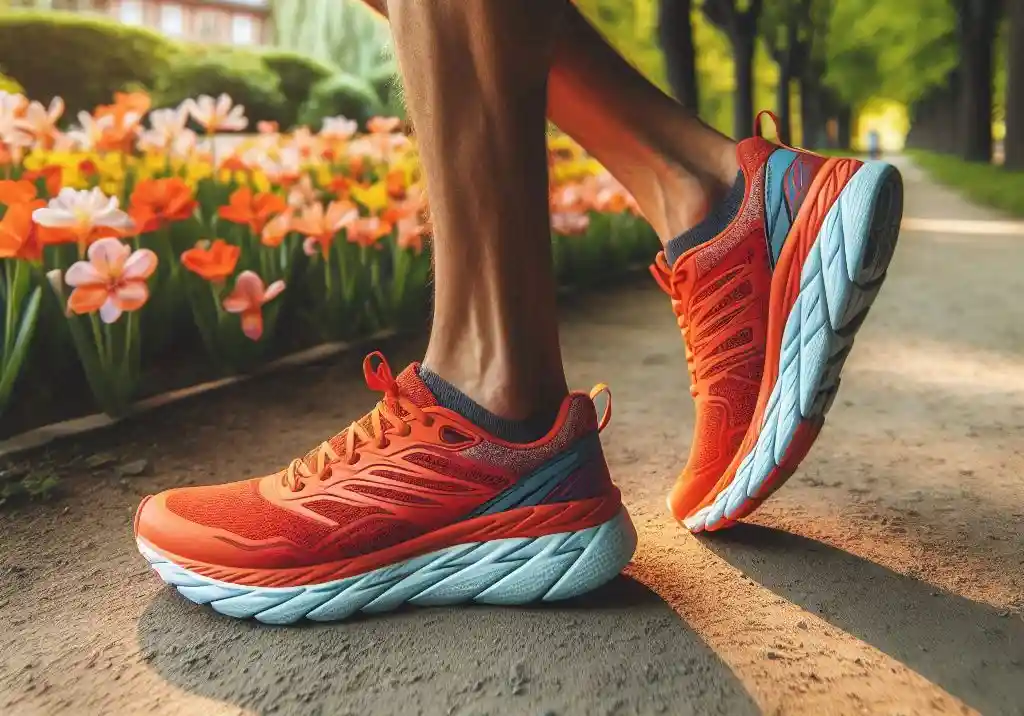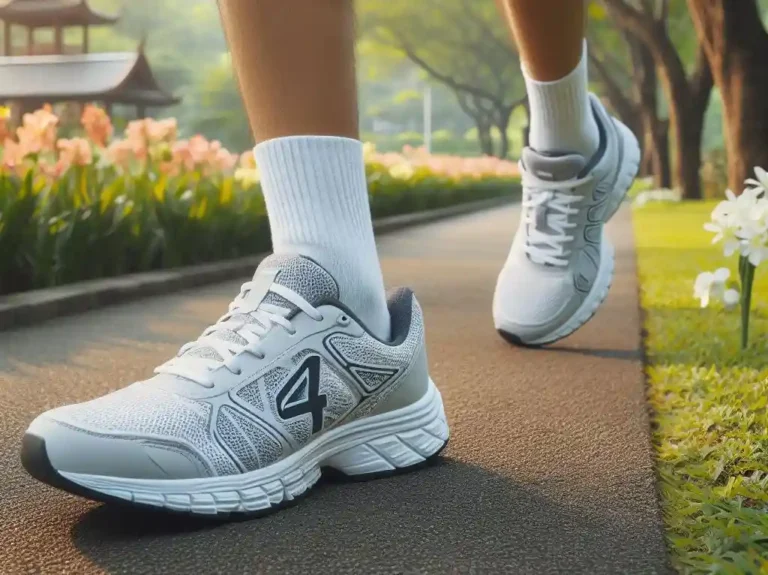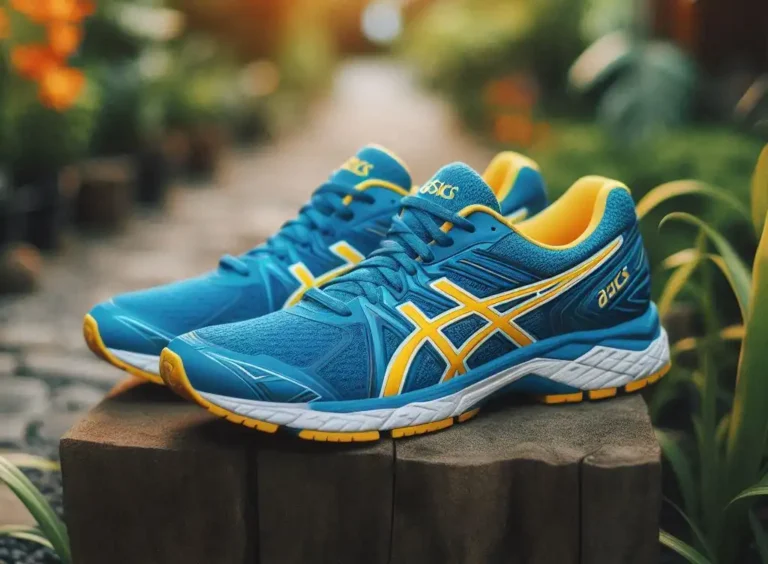Hoka Arahi 7 vs Challenger 7: Choosing the Best Running Shoe
Hoka Arahi 7 vs Challenger 7: When hitting the trails or pounding the pavement, having the right running shoe can make all the difference between a great run and a miserable one.
Two popular options often come to mind for runners seeking a comfortable, supportive, and high-performance ride: the Hoka Arahi 7 and the Challenger 7.
This in-depth comparison delves into the key similarities and differences between the Hoka Arahi 7 and Challenger 7, exploring everything from fit and feel to performance and value.
Hoka Arahi 7 vs Challenger 7: A Quick Overview

Hoka Arahi 7:
- Supportive Ride: Designed for runners with mild to moderate overpronation, the Arahi 7 offers a supportive and stable ride.
- Generous Cushioning: Features a plush midsole with 32mm of heel stack height and 24mm of forefoot stack height.
- Breathable Upper: Lightweight and breathable upper with a comfortable, seamless construction.
- Moderate Weight: Weighs in at 10.2 oz (289g) for men’s size 9.
- Ideal for: Runners with mild to moderate overpronation, those who need a balance of cushioning and support.
- Neutral Ride: Designed for runners with neutral foot pronation, the Challenger 7 offers a smooth and comfortable ride.
- Maximum Cushioning: Features an even more generous midsole with 33mm of heel stack height and 25mm of forefoot stack height.
- Lightweight and Breathable: Weighs in at 9.7 oz (274g) for men’s size 9, with a lightweight and breathable upper.
- Ideal for: Runners with neutral foot pronation, those who prioritize cushioning and comfort.
Maximizing Comfort: Key Differences in Cushioning and Support
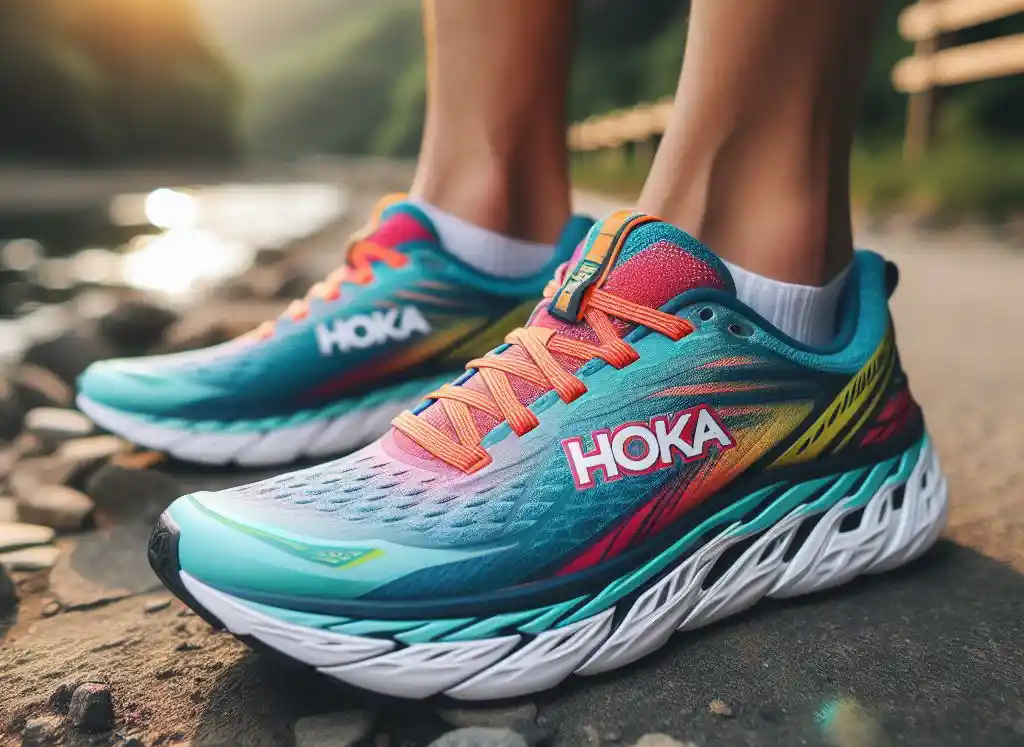
Cushioning
- Arahi 7:
- 32mm of heel stack height and 24mm of forefoot stack height
- Early stage Meta-Rocker for smooth heel-to-toe transition
- Soft and breathable midsole material for added comfort
- Challenger 7:
- 33mm of heel stack height and 25mm of forefoot stack height
- Increased cushioning in the midsole for a more comfortable ride
- Slightly softer and more responsive midsole material than the Arahi 7
Support
- Arahi 7:
- Designed for runners with mild to moderate overpronation
- Features a supportive and stable ride with a more substantial heel counter
- J-Frame technology for added support and stability
- Challenger 7:
- Designed for runners with neutral foot pronation
- Offers a more neutral and balanced ride with less support features
- No J-Frame technology, but still provides a comfortable and smooth ride
Trail vs Road: How Terrain Affects Your Shoe Choice

Trail Running
- Arahi 7:
- More aggressive outsole lug pattern for better traction on trails
- Slightly more substantial and protective upper material for added durability
- Better suited for technical trails and more rugged terrain
- Challenger 7:
- Smoother outsole lug pattern, better suited for smoother trails and dirt roads
- Less substantial upper material, still breathable and comfortable but less protective
- Better suited for smoother trails, dirt roads, and occasional road running
Road Running
- Arahi 7:
- Still a great option for road running, but may feel slightly more substantial and supportive than needed
- May not be as responsive or springy as some runners prefer for road running
- Challenger 7:
- Excellent choice for road running, with a more responsive and springy ride
- Softer and more cushioned midsole material for added comfort on hard surfaces
- Better suited for runners who prioritize comfort and cushioning on the road
Weight and Responsiveness: A Comparative Analysis

Weight
- Arahi 7:
- Men’s size 9: 10.2 oz (289g)
- Women’s size 8: 8.9 oz (252g)
- Challenger 7:
- Men’s size 9: 9.7 oz (274g)
- Women’s size 8: 8.4 oz (238g)
Responsiveness
- Arahi 7:
- Features a more substantial and supportive midsole material
- Has a slightly more pronounced heel-to-toe offset (5mm) for a more stable ride
- May feel slightly less responsive and springy due to its more substantial construction
- Challenger 7:
- Features a softer and more cushioned midsole material
- Has a slightly lower heel-to-toe offset (4mm) for a more natural stride
- May feel more responsive and springy due to its lighter and more cushioned construction
Comparison
- The Challenger 7 is slightly lighter than the Arahi 7, which can make it feel more responsive and agile.
- The Arahi 7’s more substantial midsole material and higher heel-to-toe offset make it feel more stable and supportive, but slightly less responsive.
- The Challenger 7’s softer midsole material and lower heel-to-toe offset make it feel more cushioned and springy, but slightly less stable.
Breathability and Drainage: Keeping Your Feet Cool and Dry
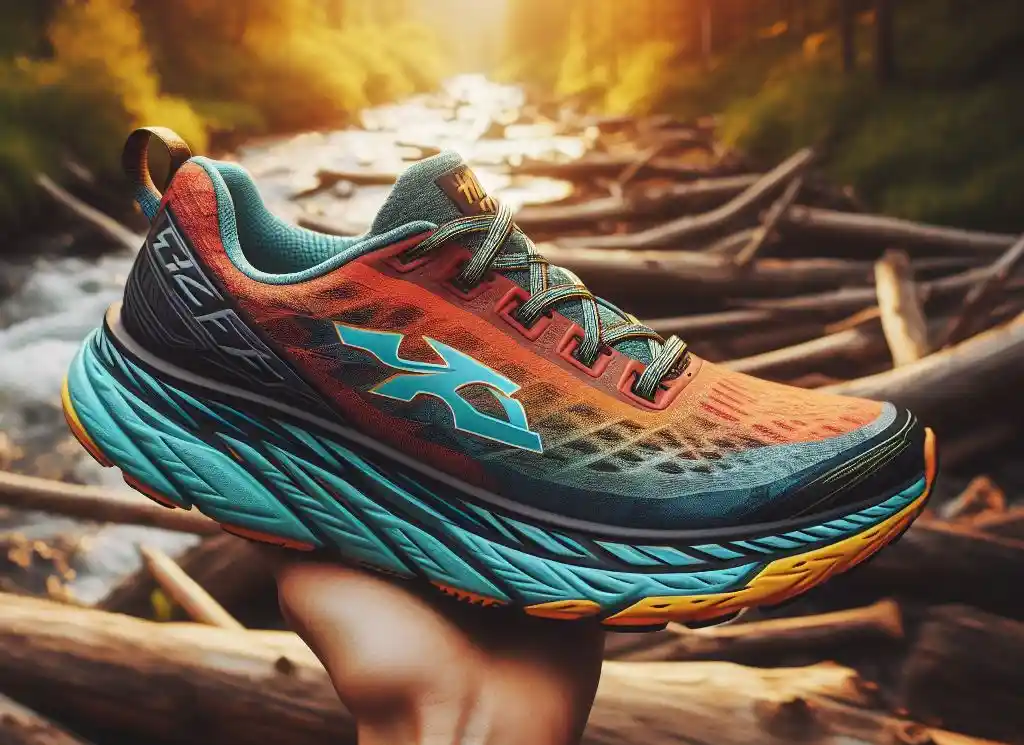
Breathability
- Arahi 7:
- Features a lightweight and breathable upper material with perforations for airflow
- Engineered mesh upper with strategic ventilation zones for enhanced breathability
- Breathable tongue and collar construction for added airflow
- Challenger 7:
- Features an even more lightweight and breathable upper material with larger perforations
- More extensive use of mesh panels for increased airflow and ventilation
- Breathable tongue and collar construction with additional ventilation zones
Drainage
- Arahi 7:
- Features drainage holes in the midsole and outsole for quick water evacuation
- Gusseted tongue construction to prevent debris and water from entering the shoe
- Water-resistant treatment on the upper material to repel water and stains
- Challenger 7:
- Features larger drainage holes in the midsole and outsole for faster water evacuation
- More extensive use of drainage channels in the outsole for improved water shedding
- Similar gusseted tongue construction and water-resistant treatment on the upper material
Comparison
- Both shoes feature breathable and drainage-focused designs, but the Challenger 7 takes it to the next level with larger perforations, more extensive mesh panels, and larger drainage holes.
- The Arahi 7 still offers excellent breathability and drainage, but may not be quite as effective as the Challenger 7 in extremely wet or humid conditions.
- If you prioritize keeping your feet cool and dry in a variety of running conditions, the Challenger 7 may be the better choice. But if you’re looking for a more supportive and stable ride with still-excellent breathability and drainage, the Arahi 7 is still a great option.
Stability and Support: Which Shoe is Best for Your Running Style
Stability
- Arahi 7:
- Designed for runners with mild to moderate overpronation
- Features a more substantial and supportive midsole material
- J-Frame technology provides additional support and stability
- Heel counter is more substantial and supportive
- Challenger 7:
- Designed for runners with neutral foot pronation
- Features a more neutral and balanced ride
- No J-Frame technology, but still provides a comfortable and smooth ride
- Heel counter is less substantial and more flexible
Support
- Arahi 7:
- Provides more substantial support and stability for runners with mild to moderate overpronation
- Features a more supportive and stable ride
- Suitable for runners who need a little more support and stability
- Challenger 7:
- Provides a more neutral and balanced ride
- Suitable for runners with neutral foot pronation
- May not provide enough support for runners with more severe overpronation
Comparison
- If you’re a runner with mild to moderate overpronation, the Arahi 7 is likely the better choice due to its more substantial support and stability features.
- If you’re a runner with neutral foot pronation, the Challenger 7 is likely the better choice due to its more neutral and balanced ride.
- If you’re a runner who needs a little more support and stability, the Arahi 7 may be the better choice. But if you prioritize a smooth and comfortable ride, the Challenger 7 is likely the better option.
Traction and Grip: How the Outsole Impacts Your Run
Outsole
- Arahi 7:
- Features a more aggressive outsole lug pattern for better traction on trails and rough roads
- Lugs are more spaced out for better grip on loose or slippery surfaces
- Outsole material is more durable and resistant to wear and tear
- Challenger 7:
- Features a less aggressive outsole lug pattern for better grip on smooth roads and tracks
- Lugs are more closely spaced for better traction on hard surfaces
- Outsole material is still durable, but slightly less so than the Arahi 7
Traction
- Arahi 7:
- Provides better traction on trails, rough roads, and slippery surfaces
- More aggressive outsole lug pattern helps to grip the ground and prevent slipping
- Challenger 7:
- Provides better traction on smooth roads and tracks
- Less aggressive outsole lug pattern helps to provide a smoother ride and better grip on hard surfaces
Grip
- Arahi 7:
- Provides better grip on loose or slippery surfaces due to the more aggressive outsole lug pattern
- More durable outsole material helps to maintain grip over time
- Challenger 7:
- Provides better grip on smooth roads and tracks due to the less aggressive outsole lug pattern
- Still provides good grip on loose or slippery surfaces, but not as good as the Arahi 7
Comparison
- If you’re a trail runner or run on rough roads, the Arahi 7 is likely the better choice due to its more aggressive outsole lug pattern and better traction on loose or slippery surfaces.
- If you’re a road runner or run on smooth tracks, the Challenger 7 is likely the better choice due to its less aggressive outsole lug pattern and better grip on hard surfaces.
- Ultimately, the choice between the Arahi 7 and Challenger 7 will depend on your individual running style and the surfaces you run on.
Fit and Sizing: Ensuring a Comfortable and Secure Ride
Fit
- Arahi 7:
- Features a more substantial and supportive upper material
- Has a more snug and secure fit through the midfoot and heel
- Provides a comfortable and secure ride for runners with mild to moderate overpronation
- Challenger 7:
- Features a lighter and more breathable upper material
- Has a more relaxed and comfortable fit through the midfoot and heel
- Provides a comfortable and smooth ride for runners with neutral foot pronation
Sizing
- Arahi 7:
- Runs true to size, with a comfortable and secure fit
- Available in a range of sizes, including narrow and wide options
- Challenger 7:
- Also runs true to size, with a comfortable and relaxed fit
- Available in a range of sizes, including narrow and wide options
Comfort
- Arahi 7:
- Provides a comfortable and secure ride for runners with mild to moderate overpronation
- Features a more substantial and supportive upper material for added comfort
- Challenger 7:
- Provides a comfortable and smooth ride for runners with neutral foot pronation
- Features a lighter and more breathable upper material for added comfort
Comparison
- If you’re a runner with mild to moderate overpronation, the Arahi 7 is likely the better choice due to its more substantial and supportive upper material and snugger fit.
- If you’re a runner with neutral foot pronation, the Challenger 7 is likely the better choice due to its lighter and more breathable upper material and more relaxed fit.
- Ultimately, the choice between the Arahi 7 and Challenger 7 will depend on your individual foot shape and running style.
Value for Money: Which Shoe Offers the Best Bang for Your Buck
Price
- Arahi 7: $130
- Challenger 7: $120
Features
- Arahi 7:
- More substantial and supportive upper material
- J-Frame technology for added support and stability
- More aggressive outsole lug pattern for better traction on trails and rough roads
- Challenger 7:
- Lighter and more breathable upper material
- Less aggressive outsole lug pattern for better grip on smooth roads and tracks
- Softer and more cushioned midsole material for added comfort
Value
- Arahi 7:
- Offers excellent value for runners who need a more supportive and stable ride
- Provides a comfortable and secure fit for runners with mild to moderate overpronation
- Features a more aggressive outsole lug pattern for better traction on trails and rough roads
- Challenger 7:
- Offers excellent value for runners who prioritize comfort and cushioning
- Provides a comfortable and smooth ride for runners with neutral foot pronation
- Features a softer and more cushioned midsole material for added comfort
Comparison
- If you’re a runner who needs a more supportive and stable ride, the Arahi 7 may be the better value due to its more substantial upper material and J-Frame technology.
- If you’re a runner who prioritizes comfort and cushioning, the Challenger 7 may be the better value due to its softer and more cushioned midsole material.
- Ultimately, the choice between the Arahi 7 and Challenger 7 will depend on your individual running style and preferences.
FAQs
Q: What is the main difference between the Hoka Arahi 7 and Challenger 7?
A: The main difference is that the Arahi 7 is designed for runners with mild to moderate overpronation, while the Challenger 7 is designed for runners with neutral foot pronation.
Q: Which shoe is more supportive?
A: The Arahi 7 is more supportive due to its more substantial upper material and J-Frame technology.
Q: Which shoe is more cushioned?
A: The Challenger 7 is more cushioned due to its softer and more cushioned midsole material.
Q: Can I wear the Arahi 7 for trail running?
A: Yes, the Arahi 7 is suitable for trail running due to its more aggressive outsole lug pattern and better traction on trails and rough roads.
Q: Can I wear the Challenger 7 for road running?
A: Yes, the Challenger 7 is suitable for road running due to its less aggressive outsole lug pattern and better grip on smooth roads and tracks.
Q: Which shoe is more breathable?
A: The Challenger 7 is more breathable due to its lighter and more breathable upper material.
Q: Which shoe is more durable?
A: The Arahi 7 is more durable due to its more substantial upper material and outsole.
Q: Can I wear the Arahi 7 for long distances?
A: Yes, the Arahi 7 is suitable for long distances due to its comfortable and supportive ride.
Q: Can I wear the Challenger 7 for short distances?
A: Yes, the Challenger 7 is suitable for short distances due to its comfortable and smooth ride.

Mia Smith is the founder of Shoe Storyteller, a blog that celebrates the art and stories behind shoes. With a passion for fashion and a flair for storytelling, Mia brings a unique perspective to the world of footwear.

